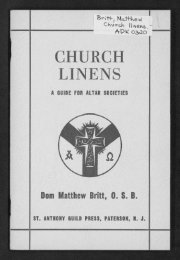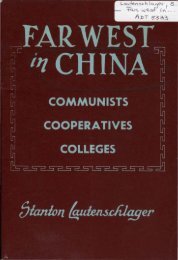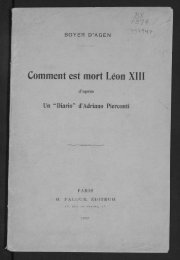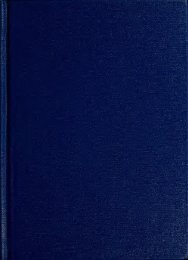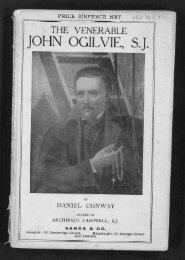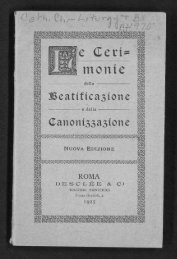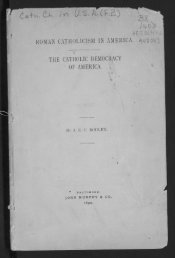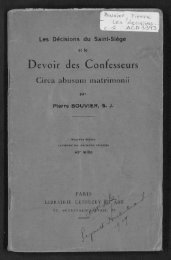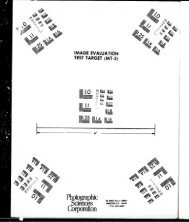MONASTIC AND ECCLESIASTICAL. COSTUME.
MONASTIC AND ECCLESIASTICAL. COSTUME.
MONASTIC AND ECCLESIASTICAL. COSTUME.
Create successful ePaper yourself
Turn your PDF publications into a flip-book with our unique Google optimized e-Paper software.
<strong>AND</strong> <strong>ECCLESIASTICAL</strong> <strong>COSTUME</strong>. 5<br />
scapularium]. This garment was a sleeveless tunic,<br />
fitting somewhat close to the body; it had arm-holes at<br />
the sides, and covered the shoulders down to the knees.<br />
The so-called scapular of the church is different. Over<br />
this came the cowl [cuculle, coule, goule; lat. cucullus], 5<br />
a gown with large loose sleeves, nearly synonymous<br />
with the froc of the French monk, but whereas the<br />
cowl and the frock were often confounded, there is an<br />
ambiguity about this article of dress, especially as to<br />
being with or without sleeves. The cowl was the. special<br />
and characteristic garment of the professed monk, whereas<br />
the lay brothers, to whom it was not allowed, wore a<br />
scapular somewhat larger and fuller than ordinary. The<br />
last, or uppermost garment [qui tos les autres garde] was<br />
the mantle or cloak [chape; lat. chapaj.<br />
Such was apparently the Benedictine dress, and will<br />
be found to coincide with the extracts from Mabillon's<br />
Benedictine Annals. The Cluniac monk added to these<br />
articles of clothing, breeches, socks, and boots, but these<br />
names are to be taken as modifications of the sort now<br />
in use. The Cluniac rule specifies also shoes tied with<br />
thongs, and gives the monk a head covering, or cap, and<br />
gloves when journeying or going far beyond the convent's<br />
precincts.<br />
The Benedictine nuns had similar habits, but pilches,<br />
veils, and wimples were of course their special attributes.<br />
The wimple or wimpel \_guimpe; lat. wimpla] took its<br />
origin from the scapular, and was a habit coming close<br />
up to the chin, neck, and sides of the face, and covering<br />
the bosom. The pilch (i.e., petticoat), one of the two<br />
robes talaires, which she wore down to the heels, is said<br />
to be derived from pellicium, a garment of lamb-skins.<br />
Except in some few orders, the nun's habit was more or<br />
less the same.<br />
In the earliest ages the nun was allowed to retain her<br />
hair; she was not, however, allowed to plait it or to<br />
5 The distinction, according to Du Cange, between the cowl [cucullus, coule]<br />
and the frock [floccum, froc] consisted in the former being a '' habit long and full,<br />
without sleeves," whereas the frock [froc, floccum] was the same, but "withlong<br />
and wide sleeves."



